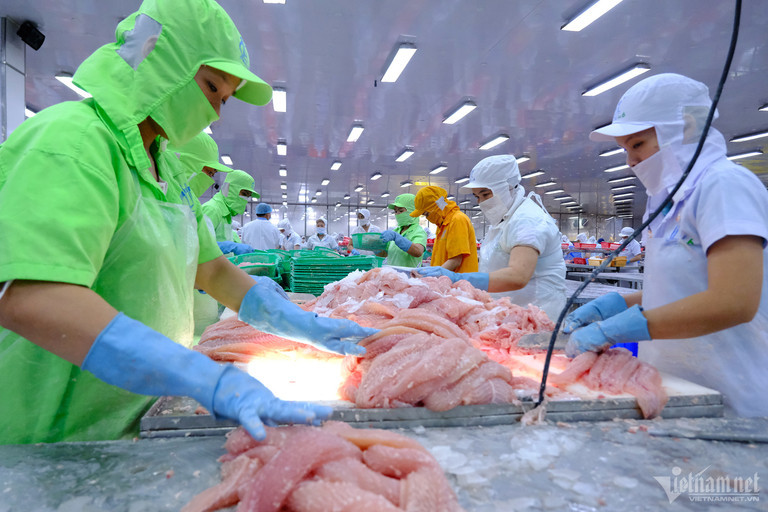
Vietnamese importers are facing increased shipping costs and delays in delivery because carriers have to divert ships from the Red Sea to avoid rebel attacks.
Nguyen Dinh Tung, general director of Vina T&T, one of the largest fruit exporters, told VietNamNet on January 11 that ocean freight rates have soared because of the Red Sea crisis, while the ships carrying the company’s fruits to the EU are still floating on the sea.
“We are two weeks late,” he said.
What worries Tung the most is that the quality of fruits may decrease because of the delivery delay.
For fresh exports, shipping time determines the freshness and quality of products. Therefore, fruit exporters have to select fruits with reasonable maturity and choose suitable freight services to be sure that fruits will be at their most delicious when they are put on supermarkets’ shelves.
“We are negotiating with partners on rescheduling deliveries,” he said.
As for the South Korean market, the company has decided to ship by air instead of by sea as initially planned.
Because of the Red Sea crisis, vessels have had to be re-routed. They are not going through the Suez Canal but round the South Africa's Good Hope Cape, which results in increasing shipping time and costs.
International media reports that average costs have nearly doubled since late November.
Previously, it took 28-30 days to carry goods to Europe. Goods owners have been warned that the time needed will increase to 47-55 days and ocean freight will increase sharply.
Nguyen Quoc Chiem from Sao Ta Food said the company has been informed by shipping firms that freight rates for exports to Europe have soared to $5,300-6,400 per container.
Chiem said if the problem cannot be solved, freight rates will continue escalating and may reach peaks seen during the Covid-19 outbreak ($20,000 per container).
More seriously, Europeans may think of buying goods from other suppliers which don’t have to go through the Red Sea in order to cut costs. This means that Vietnamese enterprises may lose partners and orders.
The Vietnam Association of Seafood exporters and Producers (VASEP) has reported the freight rate hike to the Import-Export Management Department under the Ministry of Industry and Trade (MOIT).
A series of shipping firms, including Yang Ming Line, One, Evergreen Line, HMM and Maersk, have increased cargo shipping rates to the US, Canada and the EU because of tensions in the Red Sea.
Since January 2024, container rates to the West Coast of the US have increased by $800-1,250 per container compared to last December, to $2,873-2,950, while rates to the East Coast are up by $1,400-1,750 to $4,100-4,500, which means increases of 58-73 percent.
The shipping rate to the EU has been the highest increase. Goods owners have to pay $4,350-4,450 per container to carry goods to Hamburg in January, an increase of 3.5 times over December.
Exports need replanning
According to VASEP, about 80 percent of exports to the East Coast of the US, Canada and the EU have to go through the Suez Canal. But because of the Red Sea crisis, vessels have to divert from the route and go through the Good Hope Cape in South Africa, which means that the journey is 7-10 days longer. That is why ships have charged goods owners more..
Meanwhile, due to the low cargo traffic in 2023, mother ships have been eliminated on certain routes. As journeys are prolonged, ship turnover will need up to two weeks. Some weekly journeys on certain routes have been cut, leading to lack of room.
The Import-Export Department has released a notice about the problem, recommending that associations and logistics minimize the possible impacts caused by the Red Sea crisis.
Associations and businesses need to strengthen monitoring and regularly update information so as to control production and export plans and avoid congestion.
The agency has also recommended that provisions on compensation and liability exemption in emergency cases need to be included in commercial contracts. Businesses have been advised to take insurance policies out to minimize losses when the time needed to carry goods is prolonged.
Tam An